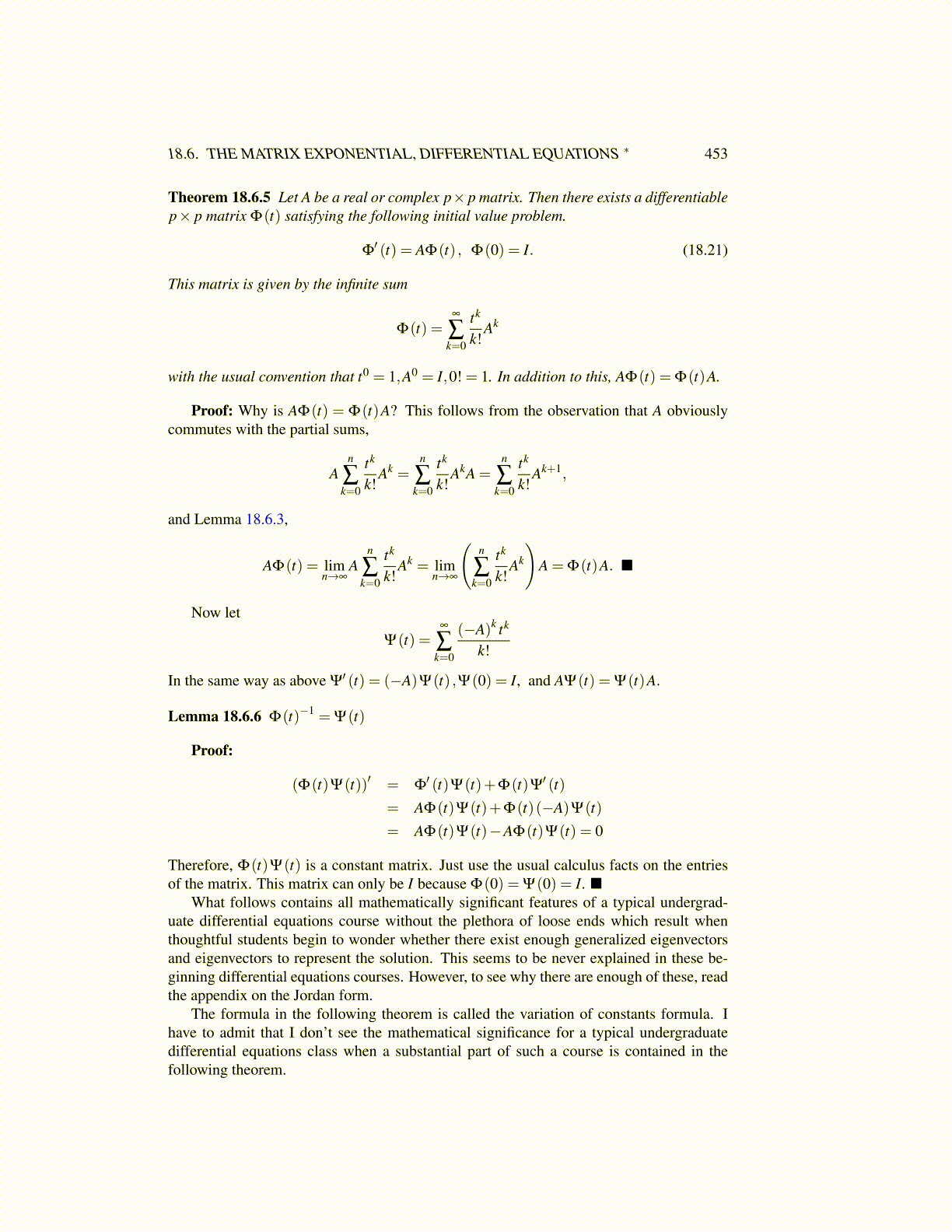
18.6. THE MATRIX EXPONENTIAL, DIFFERENTIAL EQUATIONS ∗ 453
Theorem 18.6.5 Let A be a real or complex p× p matrix. Then there exists a differentiablep× p matrix Φ(t) satisfying the following initial value problem.
Φ′ (t) = AΦ(t) , Φ(0) = I. (18.21)
This matrix is given by the infinite sum
Φ(t) =∞
∑k=0
tk
k!Ak
with the usual convention that t0 = 1,A0 = I,0! = 1. In addition to this, AΦ(t) = Φ(t)A.
Proof: Why is AΦ(t) = Φ(t)A? This follows from the observation that A obviouslycommutes with the partial sums,
An
∑k=0
tk
k!Ak =
n
∑k=0
tk
k!AkA =
n
∑k=0
tk
k!Ak+1,
and Lemma 18.6.3,
AΦ(t) = limn→∞
An
∑k=0
tk
k!Ak = lim
n→∞
(n
∑k=0
tk
k!Ak
)A = Φ(t)A. ■
Now let
Ψ(t) =∞
∑k=0
(−A)k tk
k!
In the same way as above Ψ′ (t) = (−A)Ψ(t) ,Ψ(0) = I, and AΨ(t) = Ψ(t)A.
Lemma 18.6.6 Φ(t)−1 = Ψ(t)
Proof:
(Φ(t)Ψ(t))′ = Φ′ (t)Ψ(t)+Φ(t)Ψ
′ (t)
= AΦ(t)Ψ(t)+Φ(t)(−A)Ψ(t)
= AΦ(t)Ψ(t)−AΦ(t)Ψ(t) = 0
Therefore, Φ(t)Ψ(t) is a constant matrix. Just use the usual calculus facts on the entriesof the matrix. This matrix can only be I because Φ(0) = Ψ(0) = I. ■
What follows contains all mathematically significant features of a typical undergrad-uate differential equations course without the plethora of loose ends which result whenthoughtful students begin to wonder whether there exist enough generalized eigenvectorsand eigenvectors to represent the solution. This seems to be never explained in these be-ginning differential equations courses. However, to see why there are enough of these, readthe appendix on the Jordan form.
The formula in the following theorem is called the variation of constants formula. Ihave to admit that I don’t see the mathematical significance for a typical undergraduatedifferential equations class when a substantial part of such a course is contained in thefollowing theorem.